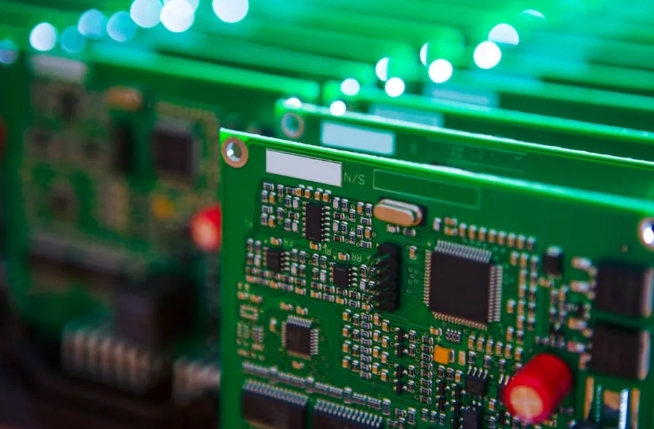High-Density Interconnect (HDI) Printed Circuit Boards (PCBs) have emerged as a game-changer in the electronics industry, enabling smaller, faster, and more reliable devices. An HDI PCB manufacturer plays a pivotal role in this revolution by designing and fabricating these advanced circuit boards that are integral to modern technology's ever-shrinking form factors and increasing performance demands. This article delves into the world of HDI PCB manufacturing, exploring its significance, process, and future prospects.

An HDI PCB is characterized by its high wiring density and smaller vias, which allow for greater functionality within a limited space. They typically incorporate features such as microvias, buried vias, and blind vias, as well as finer lines and spaces. These enhancements lead to enhanced signal integrity, reduced noise, and improved thermal management, making them ideal for applications requiring compactness, speed, and precision.
An HDI PCB manufacturer specializes in the design, production, and testing of these sophisticated circuit boards. The process begins with understanding customer requirements and translating them into complex designs using advanced Computer-Aided Design (CAD) tools. The manufacturer then selects suitable materials—like low-loss laminates and copper foil—and employs cutting-edge fabrication techniques like laser drilling, multi-layer lamination, and sequential lamination to create intricate HDI structures.
The production phase involves multiple steps including etching, plating, and patterning to form the interconnect layers. Quality control is stringent throughout the entire manufacturing process, from bare board inspection to final assembly checks, ensuring compliance with industry standards and customer specifications.
Despite the benefits they offer, manufacturing HDI PCBs presents several challenges, such as precise alignment during layer stacking, maintaining via-to-via registration, and dealing with the complexity of fine-pitch components. However, innovative technologies like direct imaging, semi-additive processes, and automated optical inspection systems have significantly improved the efficiency and accuracy of HDI PCB manufacturing.
Moreover, leading HDI PCB manufacturers continuously invest in research and development to stay ahead of the curve, incorporating emerging trends like flexible HDI, rigid-flex HDI, and 3D integration into their product portfolios. This commitment ensures they can meet the evolving needs of industries like telecommunications, aerospace, automotive, medical devices, and consumer electronics.
Quality and Certifications: Look for a manufacturer with ISO 9001, IPC-6012 Class 2 or Class 3 certifications, ensuring they adhere to international quality standards. Additionally, RoHS, UL, and other environmental and safety certifications demonstrate their commitment to eco-friendly and compliant products.
Technical Expertise: A reputable HDI PCB manufacturer should possess extensive experience and technical knowledge in designing and fabricating complex boards. Check for their capability to handle advanced features like microvias, blind and buried vias, and fine-line technology.
Capabilities and Capacity: Assess the manufacturer's production capabilities, including their ability to handle multi-layer HDI PCBs, smallest via sizes, and line/space dimensions. Their capacity to accommodate both small and large volume orders, as well as quick turnarounds, is equally important.
Material Quality: The use of high-quality materials such as FR-4, Rogers, Teflon, or specialized laminates is critical for the performance and durability of HDI PCBs. Ensure your chosen manufacturer has access to and expertise in using these materials.
Customer Service and Communication: Effective communication channels and responsive customer service are vital. A good manufacturer will work closely with you from design to delivery, providing design for manufacturability (DFM) feedback and post-production support.
Industry Reputation and References: Research the company's reputation within the industry. Reviews, testimonials, and case studies can provide insights into their reliability and performance. Direct references from current or past customers can also be valuable.
Environmental Responsibility: Given the growing concern over sustainability, consider a manufacturer that practices green manufacturing processes, recycles waste materials, and follows environmentally conscious disposal methods.
Cost-effectiveness: While not compromising on quality, evaluate the cost structure offered by different manufacturers, considering factors like tooling costs, MOQs, and pricing for prototypes and mass production.
By carefully evaluating potential HDI PCB manufacturers against these criteria, you can make an informed decision that ensures the best possible outcome for your project and business needs.
In conclusion, choosing the right HDI PCB manufacturer in China is instrumental in leveraging the full potential of high-density interconnect technology. By meticulously assessing each candidate's quality standards, technical capabilities, customer service, and environmental responsibility, you'll find a trusted partner capable of delivering cutting-edge PCB solutions that meet and exceed the demands of tomorrow’s electronics landscape.